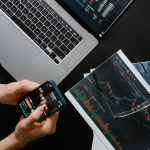Market sentiment changes fast. When it does, those who spot the shift early often position themselves far better than the rest. One of the most efficient ways to see what’s going on, across the board and in the moment, is by using a heatmap. This tool gives you a direct view of how the market behaves, not through complex formulas or delayed summaries, but through patterns you can see instantly. It turns dispersed numbers into an organized, visual guide that speaks volumes about what’s unfolding right now.
The Power of a Stock Heatmap in Fast Decision-Making
In real-time trading, minor delays can be costly. Charts and indicators offer depth but don’t always tell the whole story. A stock heatmap gives you a wider lens. It shows the broader environment - what’s moving, how much, and in what direction — all without requiring deep digging.
The layout is simple but effective. Each section on the map stands for a company or a group of stocks. Color tells the story. Deep red means significant losses, bright green means substantial gains — the more intense the shade, the more forceful the movement. You’re not just looking at price. You’re feeling pressure, enthusiasm, and hesitation. You’re watching emotion unfold in a format that cuts through the fog.
Why a Stock Market Map Is More Than a Pretty Graphic
Many traders overlook visual tools. That’s a mistake. A stock market map reveals how capital is flowing. When defensive names show strength while high-growth stocks fade, something’s shifting. That shift can signal rising caution or profit-taking after a rally.
This tool doesn’t need long explanations. One glance can tell you more than a page of numbers. And because it works visually, it allows the brain to compare movement across sectors without reading each chart. That speed matters, especially when decisions must be made on the fly.
The SP500 Heatmap: A Window Into the Core
In the global market structure, few benchmarks carry as much weight as the S&P 500. It doesn’t just reflect current activity -— it drives it. That’s why the SP500 heatmap is essential to a trader’s daily toolkit. It highlights where the most prominent players are gaining or losing ground.
When specific sectors light up green while others are dragging, it tells a story of rotation, allocation, and shifting confidence. These are clues. And when patterns on this map become unusually consistent — across many sectors, for example — it often sets the stage for larger moves in the index itself. These aren't theories. They're observations are based on the behavior of significant capital.
How Professionals Use Heatmaps in Daily Workflows
Experienced traders develop habits that minimize noise and maximize focus. One of these habits involves monitoring heatmaps in real time. They’re not used to confirm every decision but to create context — to show whether a breakout has support from the sector or if a pullback is isolated.
Seeing which areas are drawing capital and which are being ignored helps with more than timing. It helps with confidence. When you're aligned with flow, your trades tend to feel cleaner. Strong moves in one direction across related names often signal where momentum is building.
From Noise to Insight: Why Heatmaps Remain Essential
Markets never stop producing information. It all adds to the stream from corporate updates to economic figures, from policy meetings to unexpected news. It’s too much for anyone to follow line by line. What professionals rely on isn’t superhuman memory or constant attention. It’s the ability to prioritize.
A well-structured heatmap doesn’t add to the noise. It organizes it. It shows where the volume is rising, trends are forming, and sentiment is changing. That tool is hard to overstate in a space where time is limited and clarity is rare.















